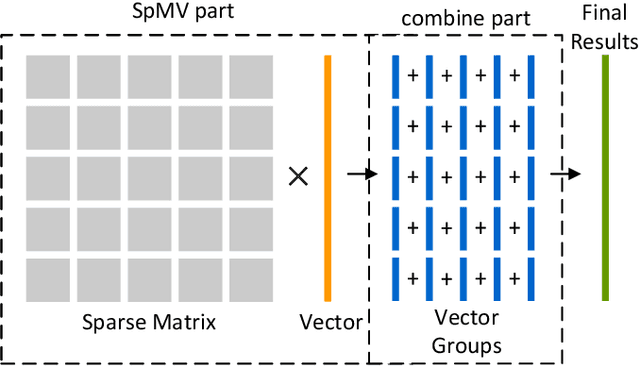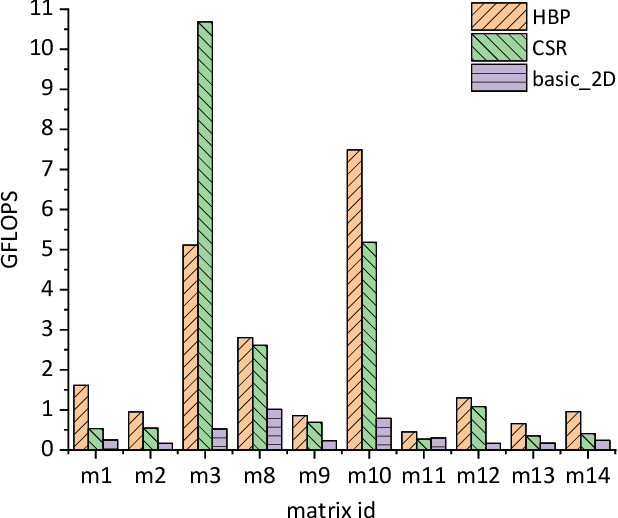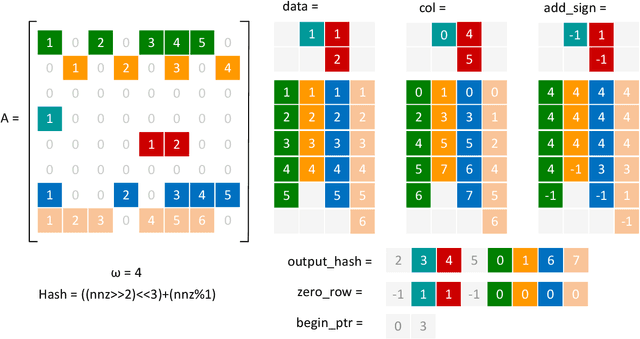Zhulin An
Overcoming Prompts Pool Confusion via Parameterized Prompt for Incremental Object Detection
Oct 31, 2025Abstract:Recent studies have demonstrated that incorporating trainable prompts into pretrained models enables effective incremental learning. However, the application of prompts in incremental object detection (IOD) remains underexplored. Existing prompts pool based approaches assume disjoint class sets across incremental tasks, which are unsuitable for IOD as they overlook the inherent co-occurrence phenomenon in detection images. In co-occurring scenarios, unlabeled objects from previous tasks may appear in current task images, leading to confusion in prompts pool. In this paper, we hold that prompt structures should exhibit adaptive consolidation properties across tasks, with constrained updates to prevent catastrophic forgetting. Motivated by this, we introduce Parameterized Prompts for Incremental Object Detection (P$^2$IOD). Leveraging neural networks global evolution properties, P$^2$IOD employs networks as the parameterized prompts to adaptively consolidate knowledge across tasks. To constrain prompts structure updates, P$^2$IOD further engages a parameterized prompts fusion strategy. Extensive experiments on PASCAL VOC2007 and MS COCO datasets demonstrate that P$^2$IOD's effectiveness in IOD and achieves the state-of-the-art performance among existing baselines.
$\text{S}^2$Q-VDiT: Accurate Quantized Video Diffusion Transformer with Salient Data and Sparse Token Distillation
Aug 06, 2025Abstract:Diffusion transformers have emerged as the mainstream paradigm for video generation models. However, the use of up to billions of parameters incurs significant computational costs. Quantization offers a promising solution by reducing memory usage and accelerating inference. Nonetheless, we observe that the joint modeling of spatial and temporal information in video diffusion models (V-DMs) leads to extremely long token sequences, which introduces high calibration variance and learning challenges. To address these issues, we propose \textbf{$\text{S}^2$Q-VDiT}, a post-training quantization framework for V-DMs that leverages \textbf{S}alient data and \textbf{S}parse token distillation. During the calibration phase, we identify that quantization performance is highly sensitive to the choice of calibration data. To mitigate this, we introduce \textit{Hessian-aware Salient Data Selection}, which constructs high-quality calibration datasets by considering both diffusion and quantization characteristics unique to V-DMs. To tackle the learning challenges, we further analyze the sparse attention patterns inherent in V-DMs. Based on this observation, we propose \textit{Attention-guided Sparse Token Distillation}, which exploits token-wise attention distributions to emphasize tokens that are more influential to the model's output. Under W4A6 quantization, $\text{S}^2$Q-VDiT achieves lossless performance while delivering $3.9\times$ model compression and $1.3\times$ inference acceleration. Code will be available at \href{https://github.com/wlfeng0509/s2q-vdit}{https://github.com/wlfeng0509/s2q-vdit}.
Merlin: Multi-View Representation Learning for Robust Multivariate Time Series Forecasting with Unfixed Missing Rates
Jun 14, 2025Abstract:Multivariate Time Series Forecasting (MTSF) involves predicting future values of multiple interrelated time series. Recently, deep learning-based MTSF models have gained significant attention for their promising ability to mine semantics (global and local information) within MTS data. However, these models are pervasively susceptible to missing values caused by malfunctioning data collectors. These missing values not only disrupt the semantics of MTS, but their distribution also changes over time. Nevertheless, existing models lack robustness to such issues, leading to suboptimal forecasting performance. To this end, in this paper, we propose Multi-View Representation Learning (Merlin), which can help existing models achieve semantic alignment between incomplete observations with different missing rates and complete observations in MTS. Specifically, Merlin consists of two key modules: offline knowledge distillation and multi-view contrastive learning. The former utilizes a teacher model to guide a student model in mining semantics from incomplete observations, similar to those obtainable from complete observations. The latter improves the student model's robustness by learning from positive/negative data pairs constructed from incomplete observations with different missing rates, ensuring semantic alignment across different missing rates. Therefore, Merlin is capable of effectively enhancing the robustness of existing models against unfixed missing rates while preserving forecasting accuracy. Experiments on four real-world datasets demonstrate the superiority of Merlin.
Q-VDiT: Towards Accurate Quantization and Distillation of Video-Generation Diffusion Transformers
May 28, 2025Abstract:Diffusion transformers (DiT) have demonstrated exceptional performance in video generation. However, their large number of parameters and high computational complexity limit their deployment on edge devices. Quantization can reduce storage requirements and accelerate inference by lowering the bit-width of model parameters. Yet, existing quantization methods for image generation models do not generalize well to video generation tasks. We identify two primary challenges: the loss of information during quantization and the misalignment between optimization objectives and the unique requirements of video generation. To address these challenges, we present Q-VDiT, a quantization framework specifically designed for video DiT models. From the quantization perspective, we propose the Token-aware Quantization Estimator (TQE), which compensates for quantization errors in both the token and feature dimensions. From the optimization perspective, we introduce Temporal Maintenance Distillation (TMD), which preserves the spatiotemporal correlations between frames and enables the optimization of each frame with respect to the overall video context. Our W3A6 Q-VDiT achieves a scene consistency of 23.40, setting a new benchmark and outperforming current state-of-the-art quantization methods by 1.9$\times$. Code will be available at https://github.com/cantbebetter2/Q-VDiT.
PrePrompt: Predictive prompting for class incremental learning
May 13, 2025Abstract:Class Incremental Learning (CIL) based on pre-trained models offers a promising direction for open-world continual learning. Existing methods typically rely on correlation-based strategies, where an image's classification feature is used as a query to retrieve the most related key prompts and select the corresponding value prompts for training. However, these approaches face an inherent limitation: fitting the entire feature space of all tasks with only a few trainable prompts is fundamentally challenging. We propose Predictive Prompting (PrePrompt), a novel CIL framework that circumvents correlation-based limitations by leveraging pre-trained models' natural classification ability to predict task-specific prompts. Specifically, PrePrompt decomposes CIL into a two-stage prediction framework: task-specific prompt prediction followed by label prediction. While theoretically appealing, this framework risks bias toward recent classes due to missing historical data for older classifier calibration. PrePrompt then mitigates this by incorporating feature translation, dynamically balancing stability and plasticity. Experiments across multiple benchmarks demonstrate PrePrompt's superiority over state-of-the-art prompt-based CIL methods. The code will be released upon acceptance.
A Nonlinear Hash-based Optimization Method for SpMV on GPUs
Apr 11, 2025



Abstract:Sparse matrix-vector multiplication (SpMV) is a fundamental operation with a wide range of applications in scientific computing and artificial intelligence. However, the large scale and sparsity of sparse matrix often make it a performance bottleneck. In this paper, we highlight the effectiveness of hash-based techniques in optimizing sparse matrix reordering, introducing the Hash-based Partition (HBP) format, a lightweight SpMV approach. HBP retains the performance benefits of the 2D-partitioning method while leveraging the hash transformation's ability to group similar elements, thereby accelerating the pre-processing phase of sparse matrix reordering. Additionally, we achieve parallel load balancing across matrix blocks through a competitive method. Our experiments, conducted on both Nvidia Jetson AGX Orin and Nvidia RTX 4090, show that in the pre-processing step, our method offers an average speedup of 3.53 times compared to the sorting approach and 3.67 times compared to the dynamic programming method employed in Regu2D. Furthermore, in SpMV, our method achieves a maximum speedup of 3.32 times on Orin and 3.01 times on RTX4090 against the CSR format in sparse matrices from the University of Florida Sparse Matrix Collection.
Efficient Continual Learning through Frequency Decomposition and Integration
Mar 28, 2025Abstract:Continual learning (CL) aims to learn new tasks while retaining past knowledge, addressing the challenge of forgetting during task adaptation. Rehearsal-based methods, which replay previous samples, effectively mitigate forgetting. However, research on enhancing the efficiency of these methods, especially in resource-constrained environments, remains limited, hindering their application in real-world systems with dynamic data streams. The human perceptual system processes visual scenes through complementary frequency channels: low-frequency signals capture holistic cues, while high-frequency components convey structural details vital for fine-grained discrimination. Inspired by this, we propose the Frequency Decomposition and Integration Network (FDINet), a novel framework that decomposes and integrates information across frequencies. FDINet designs two lightweight networks to independently process low- and high-frequency components of images. When integrated with rehearsal-based methods, this frequency-aware design effectively enhances cross-task generalization through low-frequency information, preserves class-specific details using high-frequency information, and facilitates efficient training due to its lightweight architecture. Experiments demonstrate that FDINet reduces backbone parameters by 78%, improves accuracy by up to 7.49% over state-of-the-art (SOTA) methods, and decreases peak memory usage by up to 80%. Additionally, on edge devices, FDINet accelerates training by up to 5$\times$.
Multi-Teacher Knowledge Distillation with Reinforcement Learning for Visual Recognition
Feb 22, 2025Abstract:Multi-teacher Knowledge Distillation (KD) transfers diverse knowledge from a teacher pool to a student network. The core problem of multi-teacher KD is how to balance distillation strengths among various teachers. Most existing methods often develop weighting strategies from an individual perspective of teacher performance or teacher-student gaps, lacking comprehensive information for guidance. This paper proposes Multi-Teacher Knowledge Distillation with Reinforcement Learning (MTKD-RL) to optimize multi-teacher weights. In this framework, we construct both teacher performance and teacher-student gaps as state information to an agent. The agent outputs the teacher weight and can be updated by the return reward from the student. MTKD-RL reinforces the interaction between the student and teacher using an agent in an RL-based decision mechanism, achieving better matching capability with more meaningful weights. Experimental results on visual recognition tasks, including image classification, object detection, and semantic segmentation tasks, demonstrate that MTKD-RL achieves state-of-the-art performance compared to the existing multi-teacher KD works.
MPQ-DM: Mixed Precision Quantization for Extremely Low Bit Diffusion Models
Dec 16, 2024



Abstract:Diffusion models have received wide attention in generation tasks. However, the expensive computation cost prevents the application of diffusion models in resource-constrained scenarios. Quantization emerges as a practical solution that significantly saves storage and computation by reducing the bit-width of parameters. However, the existing quantization methods for diffusion models still cause severe degradation in performance, especially under extremely low bit-widths (2-4 bit). The primary decrease in performance comes from the significant discretization of activation values at low bit quantization. Too few activation candidates are unfriendly for outlier significant weight channel quantization, and the discretized features prevent stable learning over different time steps of the diffusion model. This paper presents MPQ-DM, a Mixed-Precision Quantization method for Diffusion Models. The proposed MPQ-DM mainly relies on two techniques:(1) To mitigate the quantization error caused by outlier severe weight channels, we propose an Outlier-Driven Mixed Quantization (OMQ) technique that uses $Kurtosis$ to quantify outlier salient channels and apply optimized intra-layer mixed-precision bit-width allocation to recover accuracy performance within target efficiency.(2) To robustly learn representations crossing time steps, we construct a Time-Smoothed Relation Distillation (TRD) scheme between the quantized diffusion model and its full-precision counterpart, transferring discrete and continuous latent to a unified relation space to reduce the representation inconsistency. Comprehensive experiments demonstrate that MPQ-DM achieves significant accuracy gains under extremely low bit-widths compared with SOTA quantization methods. MPQ-DM achieves a 58\% FID decrease under W2A4 setting compared with baseline, while all other methods even collapse.
Continual Learning in the Frequency Domain
Oct 10, 2024



Abstract:Continual learning (CL) is designed to learn new tasks while preserving existing knowledge. Replaying samples from earlier tasks has proven to be an effective method to mitigate the forgetting of previously acquired knowledge. However, the current research on the training efficiency of rehearsal-based methods is insufficient, which limits the practical application of CL systems in resource-limited scenarios. The human visual system (HVS) exhibits varying sensitivities to different frequency components, enabling the efficient elimination of visually redundant information. Inspired by HVS, we propose a novel framework called Continual Learning in the Frequency Domain (CLFD). To our knowledge, this is the first study to utilize frequency domain features to enhance the performance and efficiency of CL training on edge devices. For the input features of the feature extractor, CLFD employs wavelet transform to map the original input image into the frequency domain, thereby effectively reducing the size of input feature maps. Regarding the output features of the feature extractor, CLFD selectively utilizes output features for distinct classes for classification, thereby balancing the reusability and interference of output features based on the frequency domain similarity of the classes across various tasks. Optimizing only the input and output features of the feature extractor allows for seamless integration of CLFD with various rehearsal-based methods. Extensive experiments conducted in both cloud and edge environments demonstrate that CLFD consistently improves the performance of state-of-the-art (SOTA) methods in both precision and training efficiency. Specifically, CLFD can increase the accuracy of the SOTA CL method by up to 6.83% and reduce the training time by 2.6$\times$.
 Add to Chrome
Add to Chrome Add to Firefox
Add to Firefox Add to Edge
Add to Edge